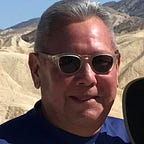Now the Lakers Have Twelve Players, Who’s Going to Start & Close Games?
One of the benefits of the Lakers having a deeper and more versatile roster than last season is it gives head coach Frank Vogel and the Lakers’ coaching staff even more options to create nightmare matchups against opponents.
While training camp will finalize the Lakers’ starting and closing lineups and rotations to begin the season, we don’t have to be rocket scientists to figure out how Vogel and his staff are likely going to use their personnel.
STARTING LINEUP
The only question regarding the Lakers’ starting lineup is whether coach Frank Vogel will replicate last season’s starting lineup by substituting Wesley Matthews for traded Danny Green or start point guard Dennis Schroder.
While there was rumbling Schroder was not happy coming off the bench for the Thunder, starting Matthews gives Vogel and the Lakers a bigger, better, and more versatile defensive lineup and deeper and more potent bench. Alternating Matthews and Schroder as starters to optimize the matchups depending on whom the Lakers were playing might be a smart option but having clearly defined roles for everybody probably overrules that.
FIRST SUBSTITUTIONS
The reason for not starting Dennis Schroder is to be able to use his elite playmaking and scoring at the catalyst to unleash the awesome offensive firepower of Lakers second unit while resting LeBron and AD.
The Lakers not only want to fix the problem they had last year when LeBron or AD were not in the lineup. They want to win those minutes, which is a big reason for making the big trade for Schroder and big signing of Harrell. Schoder and Harrell each averaged 18 points per game off the bench last year with Harrell winning 6MOY and Schroder runner-up. With Gasol anchoring the defense, the Lakers should dominate when LeBron and AD rest.
SECOND SUBSTITUTIONS
After starting the game with their best defensive lineup and following that with an elite offensive lineup, the Lakers should have the game in control and be able to continue to rest both LeBron James and Anthony Davis.
While the Lakers tried to always have James or Davis in the game, with the quick turnaround from last season and compressed schedule, the Lakers should deploy some load management to limit LeBron’s and AD’ minutes. This is the lineup where the Lakers really need a second modern center to protect the rim, stretch the floor, and allow Harrell to play four instead of five. That’s why the Lakers need to sign someone like Dewayne Dedmon.
CLOSING LINEUP
Like the starting lineup, the Lakers likely closing lineup is likely to resemble the lineup the Lakers ended games with during their championship run but with Wes Matthews replacing the traded Danny Green at shooting guard.
The beauty of this lineup is its balance at both ends of the court with five players who can stretch the floor with 3-point shooting on offense and switch and rotate on defense. It’s the Lakers’ version of ‘small ball’ with a big lineup. Vogel can also add more offense or defense to this lineup depending on the situation and matchups as we saw so often during the playoffs. There are few teams in the league who have as deep and versatile roster as the Lakers.
The above ten man rotation is designed to spread playing time evenly among players to rely on the new additions to the team to carry a bigger load and reduce minutes played by the players who just finished playing in the Finals.
The duration or content of the four lineups can be adjusted depending on how the game is going and the players are playing. As a beginning template, the four lineups give each of the ten players two 6-minute runs each half. While that works out to 12 minutes per half or 24 minutes per game, the starting and closing lineups with LeBron and AD would likely run 7 minutes per quarter, which means 14 minutes per half or 28 minutes per game.
Again, this is just a template and actual minutes played would obviously vary depending on the score, matchups, foul problems, and who was playing well. But it's an excellent blueprint for how the Lakers can optimize their roster. What it clearly shows is how the depth and versatility of the Lakers’ roster can be utilized to dramatically limit the total minutes that superstars like LeBron James and Anthony Davis and older veteran players have to play.
If you enjoyed this article and would like to share your ideas and comments with other informed Lakers fans, please join us to discuss on Lakerholics.Com.
